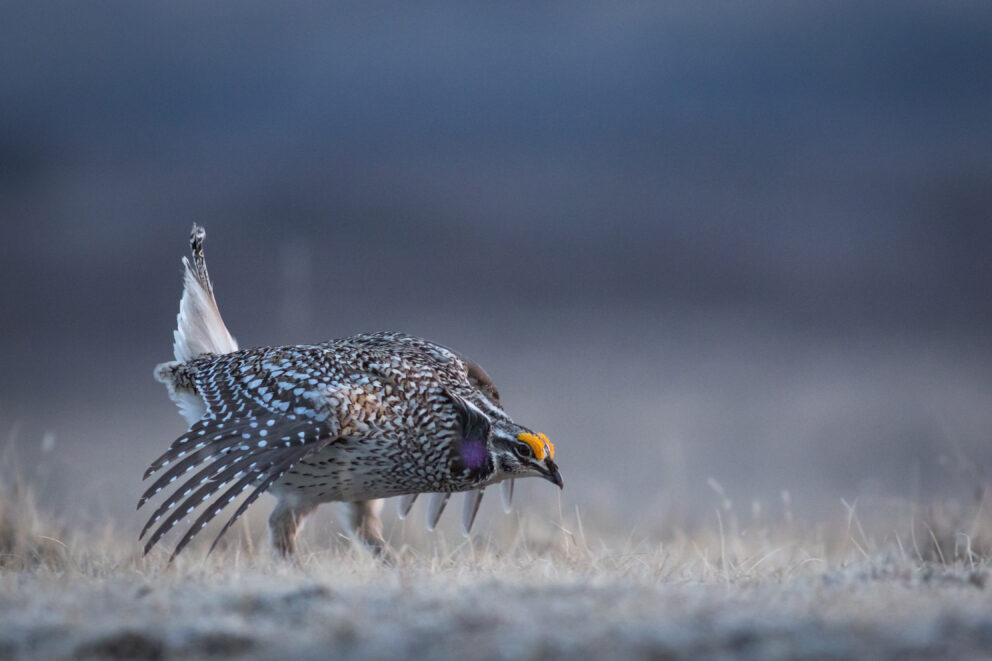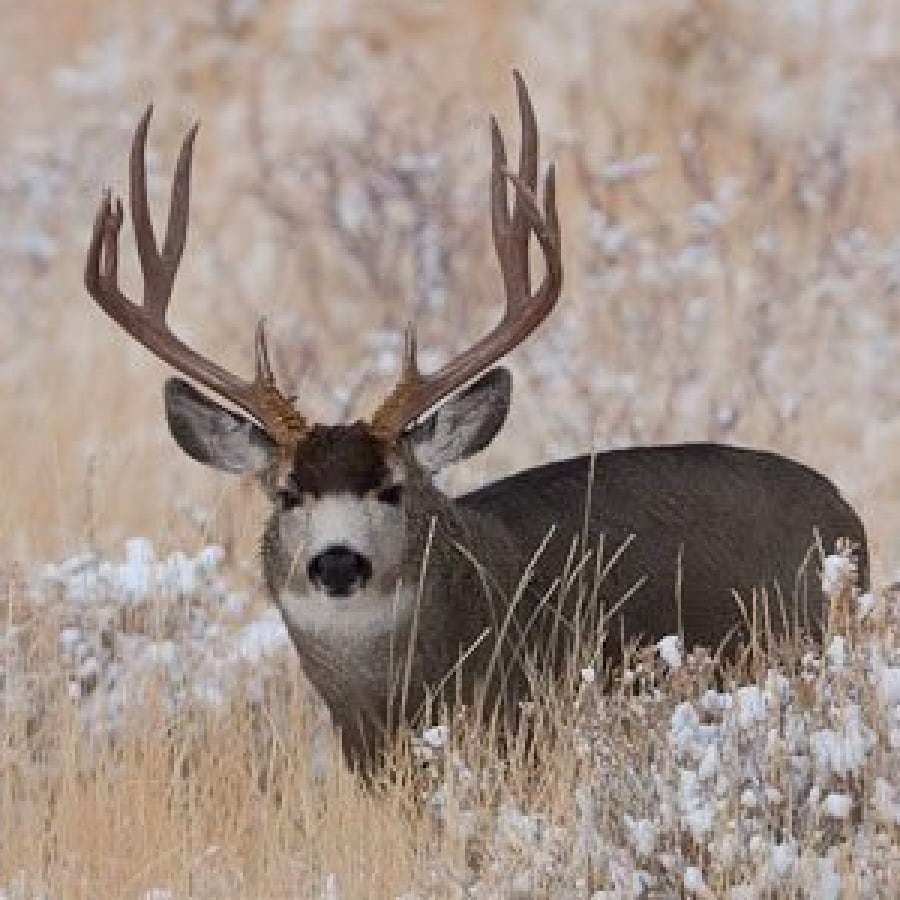- SCIENTIFIC NAME
- Tympanuchus phasianellus columbianus
- CLASSIFICATION
- Bird
- LIFE SPAN
- 1-7 Years
- SIZE
- 15-19” | 1-2lbs
- STATE CONSERVATION STATUS
-
- Priority Species
- State Protected
- FEDERAL CONSERVATION STATUS
- Least Concern
- GAME STATUS
- Game
- GAME TYPE
- Upland Game
- Washoe
- Humboldt
- Pershing
- Churchill
- Mineral
- Lyon
- Douglas
- Carson City
- Storey
- Elko
- Lander
- Eureka
- White Pine
- Esmeralda
- Nye
- Lincoln
- Clark
Habitat & Range
Columbian Sharp-tailed Grouse are native to the grasslands of the United States and Canada. Their historic range has shrank and only one isolated population can be found in the far northeastern portion of Nevada.
- Agricultural Lands
- Cold desert shrubland and sagebrush
- Grasslands
Threats
- Habitat Fragmentation
- Habitat Loss
- Human Development
Natural History
Every spring Columbian Sharp-tailed Grouse gather on a lek, or communal breeding ground. At the lek males perform a unique dance, pointing their tails upward while bending low to the ground, stomping their feet and inflating their air sacs. Females will select a nest site with brushy cover and appropriate vegetation, where they will lay 9-12 light brown, speckled eggs in a shallow, lined depression. Females will raise one brood per year. Chicks are precocial and will leave the nest with the female shortly after hatching. By 1-2 weeks in age, chicks can make short flights and by about 12 weeks of age they are self-sufficient. These medium-sized birds eat mostly seeds, buds, forbs, and leaves, along with insects when available.
Fun Facts














